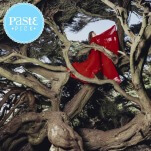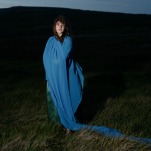Birding in Antigua, Guatemala
Photos by Josh Jackson
I didn’t go to Antigua, Guatemala, specifically for birding. I was tagging along with the Paste Studio, putting on a series of Paste sessions and a concert for Guatemalan singer/songwriter Gaby Moreno’s birthday. But towards the beginning of the pandemic, I became obsessed with birds, and this was my first opportunity since then to see experience the avifauna of another country. Before I arrived, I was a little overwhelmed.
Was it safe to go birding by myself in the mornings before we got to work? Would I even know what birds I was seeing without a tour guide? How would I get around the city without a rental car?
I needn’t have been worried. After flipping through a copy of the Peterson Field Guide to Birds of Northern Central America, I got up early my first morning there, called an Uber and headed to Finca el Pilar, a private nature preserve just 10 minutes from my hotel (Antigua is tiny, and you can get just about anywhere in the city in under 10 minutes).
It was the morning of my 50th birthday, and having celebrated with friends and family before I left, a solitary morning in nature was a wonderful gift. Entry was just 75 quetzales (even the money is named after a bird here) or about US$10. And while a locked gate had me in a moment of panic, someone quickly came to open it.

Painted Bunting
Antigua sits at an elevation of about 5,000 feet, surrounded by peaks in Guatemala’s Central Volcanic Chain. Finca el Pilar is a coffee plantation with a road climbing towards an 8,695-foot peak. As I began my ascent, I immediately noticed birds in the surrounding forest, and some of them were familiar migrants who spend their summers in the Southeast or fly through on their way to their winter home—Summer Tanagers, Black-and-White Warblers, and Rose-breasted Grosbeaks. Others were birds I’d seen on a trip out West last year, like Wilson’s and Townsend’s Warblers. But I quickly realized I’d need my camera to identify some of the birds that never venture forth, like the small yellow bird with a dusty red head that turned out to be a Chestnut-capped Warbler.
After a steep climb up the road, where I encountered two woodpeckers I’d never seen, Acorn and Golden-fronted, along with Bushy-crested Jay and Blue-and-white Mockingbird, I reached the boardwalk path back down into the valley that took me through denser forest. The birds were plentiful—Slate-throated Redstarts, Painted Bunting, White-naped Brushfinch and Rose-throated Becards, even a brief glimpse of a Singing Quail. Most were easily identified with a quick look at the Merlin app on my phone. A couple required a deeper look at my photos, and, as always, some birds were just too quick for me to get a good feel for what I saw.

Golden-fronted Woodpecker
At the bottom of the trail, the preserve has a series of hummingbird feeders set up, and little buzzing birds were everywhere. Seventeen different species have been spotted at Finca el Pilar, and I saw four of them, chasing each other around, sipping at the feeders and resting in a nearby bush. Fantastically named and brilliantly colored birds—Azure-crowned Hummingbird, Violet Sabrewing, Rufous Sabrewing and the disappointingly dubbed Rivoli’s Hummingbird (check out Bird Names for Birds). I thought a lot about bird names while in Guatemala, since none of the Nashville Warblers I saw had anything to do with a city in Tennessee, and the Summer Tanagers were still very much in existence—just not in most of the U.S.—in December. In all, I saw 31 different species of birds, 17 of which were completely new to me.

Rivoli’s Hummingbird
I had less time on my second morning in Antigua and decided to walk 10 minutes to the base of Cerro de la Cruz, a giant cross overlooking the city. My one-hour hike resulted in beautiful views of the city below and seven more new birds, including a flock of Inca Doves and a pair of Black-headed Siskins. I enjoyed the hike so much, I returned the next day and went further up the mountain, where I encountered my favorite new bird, the Gray Silky-flycatcher.

Gray Silky-flycatcher
Not a true flycatcher, the noisy, social birds are closer related to the Phainopepla of the American Southwest and remind me more of our Cedar Waxwings. Long and gray with bright yellow and white on the underside of their tail, the crested birds gather in flocks of about a dozen and are constantly on the move, foraging for berries and perching high up in the trees. I also saw several other new birds that day, including Boat-billed Flycatcher, Clay-colored Thrush, Rufous-collared Robin and the brilliantly red White-winged Tanager.

White-winged Tanager
My shuttle was leaving early on my final day, but I decided to wake up at dawn and go for a final quick hike up the mountain. The one spot I’d seen so many birds, just uphill from the cross, was eerily quiet. Then I saw the reason. A gorgeous Gray Hawk was perched in one of the trees. He was still there on my way down the mountain, but he couldn’t scare all the birds away. I saw 33 different kinds of birds that day, including the only Social Flycatchers and MacGillivray’s Warbler of the trip.
The town of Antigua itself is reason to travel there with its brightly colored buildings, cobblestone streets, shopping, restaurants, dive bars (check out Café No Sé) and 360-degree views of breathtaking volcanos. But if you find yourself there with even just a couple mornings free, I recommend checking out the abundant bird life surrounding the city, especially in the winter when so many winter migrants call its forests home.

Gray Hawk
Josh Jackson is the co-founder and editor-in-chief of Paste Magazine. You can follow him on Twitter @joshjackson or @atl_birds and on Instagram @atl_birds. Or you can just find him in the woods around Atlanta.






































